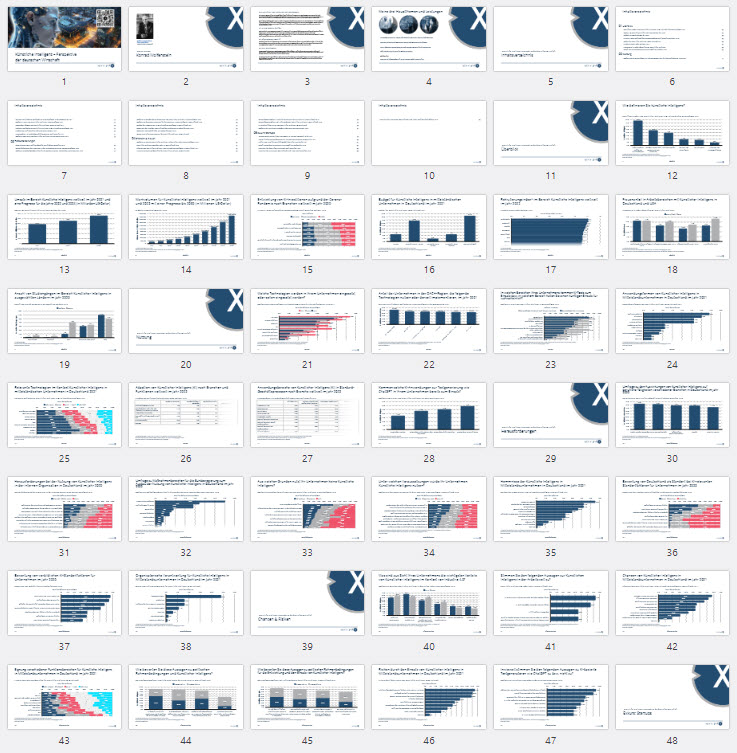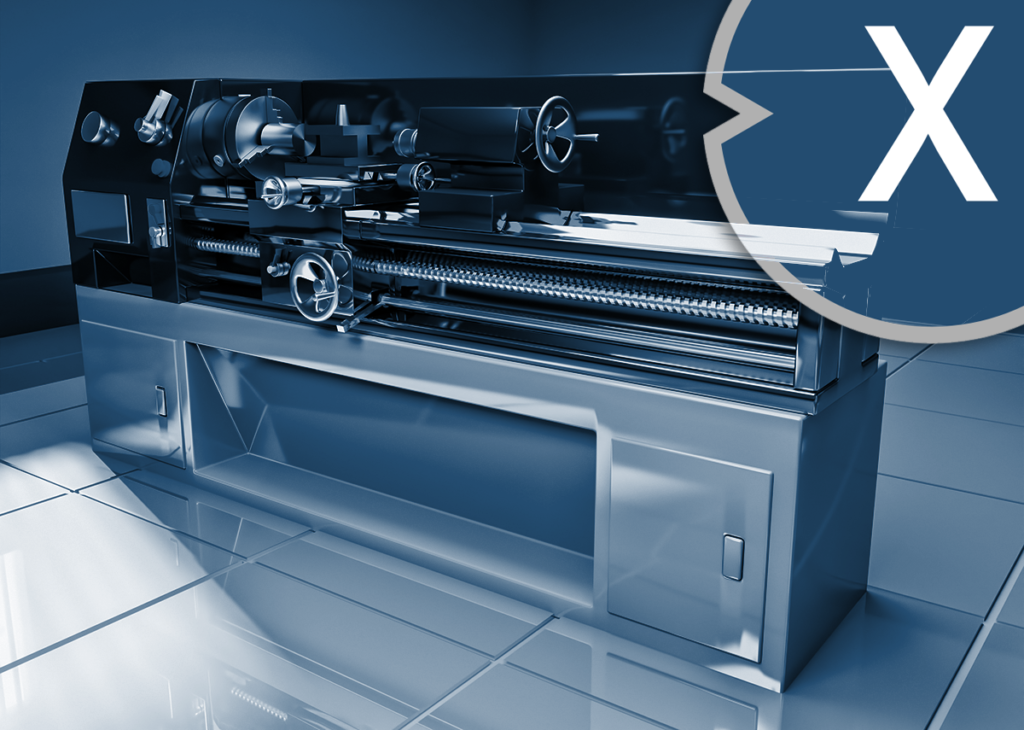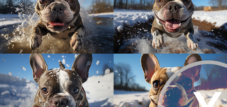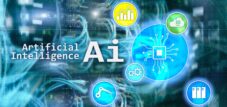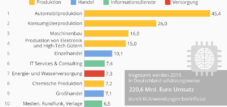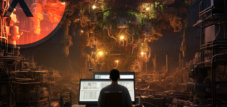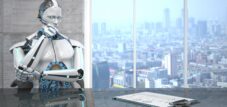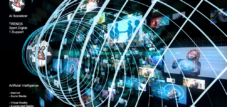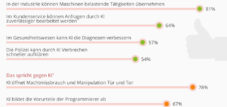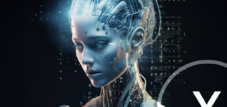Artificial intelligence in use with images: which is better? DALL·E or Midjourney? What are the alternatives? Top ten tips
Language selection 📢
Published on: November 30, 2023 / Update from: November 30, 2023 - Author: Konrad Wolfenstein

AI & XR 3D Rendering Machine: Image creation with AI – The big comparison – DALL·E versus Midjourney – Image: Xpert.Digital
🌟 Artificial intelligence (AI) in image design 🎨
🧠 Early beginnings of AI in image generation 🖼️
Artificial intelligence (AI) has revolutionized the field of image design in recent years and has now become an important tool for artists, designers and creative people. However, the beginnings of AI, which became publicly known for the creation of images, go back at least to the middle of the 20th century if we take as a starting point basic research and the first programs that could generate artistic patterns or figures. However, the modern form of image generation using AI, which is accessible to everyone, is a phenomenon that only gained popularity in the 2010s.
🚀 Progress through artificial neural networks and deep learning 🧠🎨
With advances in computer science and the emergence of powerful algorithms, researchers began experimenting with how to incorporate machines into the creation of artistic works. One of the significant milestones was the development of artificial neural networks that can work and learn in a similar way to the human brain. This technology enabled AIs to process complex data and recognize patterns, laying the foundation for modern AI art.
💥 Breakthrough with Generative Adversarial Networks (GANs) 🔍👥
The early 2010s saw a breakthrough with the popularization of deep learning and specifically the so-called Generative Adversarial Networks (GANs), which were introduced in 2014 by Ian Goodfellow and his colleagues. GANs quickly became a key technology for generating realistic images. They consist of two neural networks that work against each other: a generator that creates images and a discriminator that evaluates whether these images are real or generated by AI. This technique resulted in a more vivid and compelling art form that captured public attention.
🌌 Interest increases with Google's DeepDream and surreal-looking images 🌀📸
The release of projects like Google's DeepDream in 2015, which generated surreal-looking images from existing photos, further fueled interest in AI-generated art. Users were able to see how an algorithm-driven system manipulates images in ways that are very different from human actions. This created unique, often dream-like visuals that became a social media sensation.
💻 GPT-2 and DALL·E expand AI capabilities in image generation 🤖🎨
Another leap forward came with the release of OpenAI's GPT-2 in 2019, which was primarily developed for texts, but also offers the possibility of realizing simple forms of image generation. The following version, GPT-3, significantly improved these capabilities and enabled even more versatile interaction between AI and human users. DALL·E, based on GPT-3, soon followed, showing the public how detailed and creative AI can be with visual concepts.
🎨 Accessible AI tools shape the creative landscape 🌈🔧
In the second half of the 2010s, access to easier-to-use AI tools meant that more and more creatives began experimenting with AI. Platforms like Artbreeder and apps like Prisma, which use AI to turn photos into works of art, brought AI into the spotlight as a creative tool.
Today it is hard to imagine the creative field without AI image generation. AI tools like Midjourney and others are constantly evolving and offering their users new opportunities to create unique images. These tools are now no longer just accessible to specialists, but to anyone with internet access.
⚖️ Copyright and ethics raise important questions ❓🔒
The application of AI in image and art production has also raised important questions regarding copyright and ethics. Since AIs are trained on existing data, often derived from human creations, discussions arise about who owns the rights to the works generated by AI and how originality should be defined in this context.
📚 AI in image design: past, present and future 📅🔮
Although AI has existed in image creation for decades, it has only achieved its prominent position in the public eye in the last ten years. With continued technological improvements and increasing accessibility, AI tools are likely to continue to influence the way images are created and viewed. They have pushed the boundaries of creativity and it will be exciting to see how this technology develops and what role it will play in the future of art.
📣 Similar topics
- 🎨 AI in Image Creation: A Short History
- 👾 Deep Learning and GANs: Revolution in Art
- 🤖 The beginnings of artistic AI
- 🔮 AI Art: Then and Now
- 🌌 DeepDream and the era of visual surrealism
- 📡 GPT-3 and the evolution of image-generating AI
- 🎭 Prisma & Artbreeder: AI as a tool for everyone
- ✨ Midjourney: The Democratization of AI Creativity
- ⚖️ Copyright and ethics in AI-generated art
- 🧬 The continuous development of AI art tools
#️⃣ Hashtags: #KIImagegestalt #KIKunst #GenerativeKunst #AIinKunst #KreativmitKI
🤖📊🔍 The report 'Artificial Intelligence - Perspective of the German Economy' offers you a diverse thematic overview
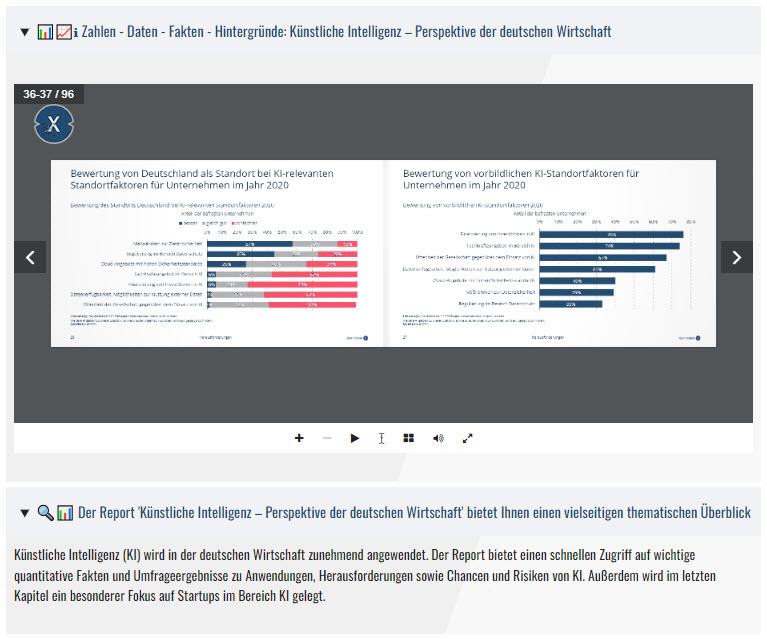
Numbers, data, facts and background: Artificial intelligence – perspective of the German economy – Image: Xpert.Digital
We currently no longer offer our newer PDFs for download. These are only available upon direct request.
However, the PDF “Artificial Intelligence - Perspective of the German Economy” (96 pages) can be found in our
📜🗺️ Infotainment portal 🌟 (e.xpert.digital)
under
https://xpert.digital/x/ai-economy
with the password: xki
view.
🤖 Which is better? DALL·E or Midjourney? What other alternatives are there? 👩🎨
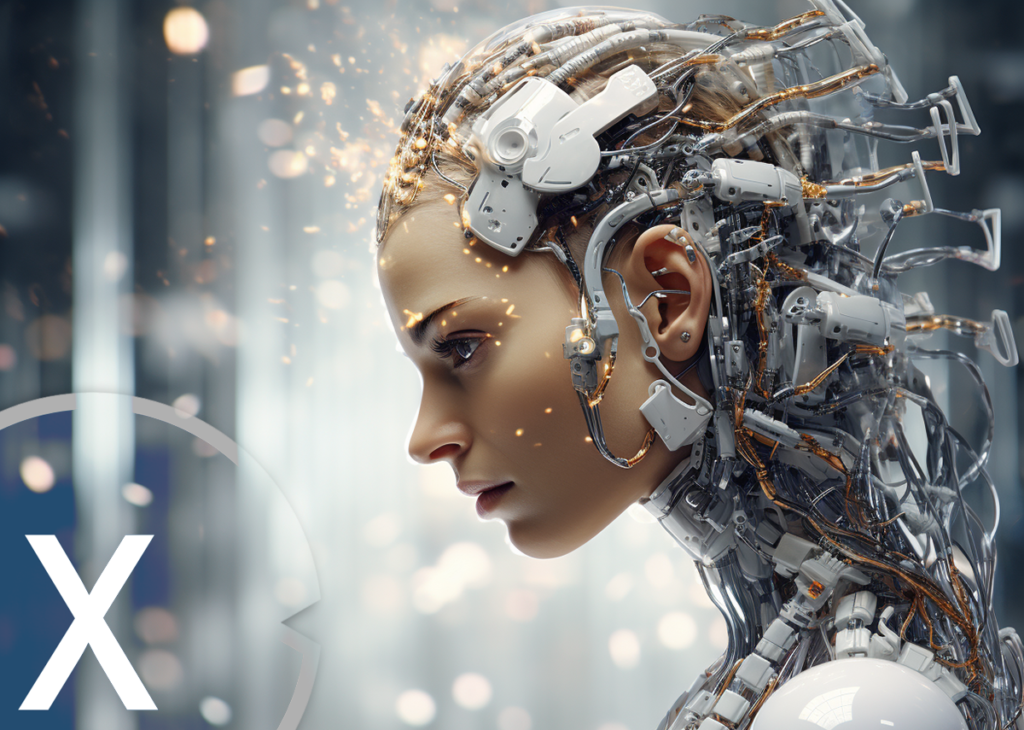
AI & XR 3D Rendering Machine: Which is Better? Image creation with AI – DALL·E or Midjourney? What other alternatives are there? – Image: Xpert.Digital
When discussing which tool – DALL·E or Midjourney – is superior, various aspects must be considered in order to obtain a differentiated picture. Both are AI-based systems trained to generate images from text descriptions, and each has its own strengths as well as alternatives, each serving different use cases and user preferences.
🔶 DALL·E
DALL·E, a program developed by OpenAI, is named after the famous artist Salvador Dalí and the Pixar film “Wall-E”. It uses an advanced version of GPT-3 to generate images that feature a high level of creativity and detail. Images created with DALL·E can produce surreal and often humorous results, some of which resemble Dalí's art.
The strengths of DALL·E lie in the attention to detail and the ability to interpret complex instructions. Not only can it generate specific objects, but it can also manipulate their properties, such as texture or lighting, quite cleverly. DALL·E is also able to implement allusions to cultural contexts or puns in his image creations.
🔷 Mid-journey
Midjourney is also an AI that specializes in generating visual content. She seems to take a slightly different approach and focuses more on stylistic diversity and aesthetic image compositions. Midjourney images often exhibit a kind of signature style that can be associated with the characteristics of certain art movements or photographic techniques.
One of Midjourney's strengths is the efficient implementation of artistic visions and the creation of images that could be well suited as a source of inspiration for designers and artists. Depending on the prompt used, Midjourney can take on different styles, making it a versatile tool.
⚖️ Comparison and decision support
To decide whether DALL·E or Midjourney is “better”, it depends a lot on the intended use. If you need highly detailed and precise images with the ability to go into details, DALL·E could be the right choice. If, on the other hand, you are looking for unique, stylistically diverse images, Midjourney could be the better alternative.
Both systems have one thing in common: they continually learn. With every image created and every new user feedback, their algorithms and the quality of the results improve.
🔧 Alternative tools
There are other alternatives to AI-generated image generation, such as DeepDream, Artbreeder, DeepArt, RunwayML, StarGAN and This Person Does Not Exist. Choosing the right tool depends on various factors such as results, ease of use and ethical considerations.
The balance between human art and machine creation is crucial when using AI tools in art and design. The choice of the “better” AI is ultimately in the hands of the users and their idea of art and technology.
It is also important to note that the use of these artificial intelligences fuels a discussion about copyright, authenticity and the definition of creativity in the modern world. While these technologies open up impressive possibilities, it is important to find a balance between respect for human art and the potential of machine creation. The decision as to which AI is the “better” lies not only in its technical capabilities, but also in the hands of the users and their understanding of the art and use of this technology.
Choosing the right tool depends not only on the desired results, but also on factors such as ease of use, accessibility, cost and ultimately one's ethical and creative stance towards using AI in art and design.
🌐🎨 In addition to DALL·E and Midjourney, there are other alternatives on the AI-generated images market
🌀 DeepDream
An AI program developed by Google that is known for creating very trippy and surreal-looking images by enhancing patterns in the images.
🌿 Artbreeder
Platform for creating combinations and variations of images through a process that can be described as “genetically” mixing properties of different images. It allows users to create and manipulate faces, landscapes and other objects in an intuitive way.
🎨 Deep Art
Focuses on turning photos into works of art using the style of famous artists such as Van Gogh or Picasso. It specializes in the stylistic transformation of existing images.
🚀 RunwayML
A creative toolkit platform that allows even laypeople to experiment with AI and train their own models without in-depth technical knowledge.
👤 StarGAN
An AI that specializes in facial modification and can, for example, change a person's age or hairstyle in an image.
👥 This Person Does Not Exist
A website that creates hyper-realistic faces of people who don't actually exist. Based on GAN technology (Generative Adversarial Networks), it impressively shows how far the technology has already advanced.
📣 Similar topics
- 🎨 DALL·E vs. Midjourney: AI art in comparison
- 🤖 Alternative AI tools for creative image generation
- 👁️ DeepDream: Creating surreal images through AI
- 🌌 Artbreeder: Genetic mixing of images
- 🖼️ DeepArt: Turn photos into masterpieces
- 🛠️ RunwayML: AI experiments for beginners
- 👩🎨 StarGAN: Face change through artificial intelligence
- 🧑🎨 This Person Does Not Exist: Hyperrealistic AI faces
- 🔍 AI in Art and Design: An Ethical Consideration
- 🤔 AI Creativity: The Future of Art?
#️⃣ Hashtags: #KIKunst #DALLEvsMidjourney #AIimagegeneration #CreativityandAI #TechnologyandArt
📸 Top ten tips for creating images or for high-quality and cost-effective photorealistic product images with artificial intelligence (AI) 🖌️
Creating high-quality product images is a crucial factor for success in e-commerce and other digital platforms. Photorealistic representations of products can have a positive influence on the purchase decision. With advancing technologies, particularly artificial intelligence (AI), it is possible to create such images cost-effectively and efficiently. Below you will find ten essential tips for creating excellent product images with the help of AI.
🧰 1. Choosing the right AI software
To get started, it is important to find the right AI software. It should be user-friendly, offer versatile editing tools, and have the ability to realistically display different lighting conditions and material textures.
📊 2. Data quality and quantity
Train your AI with a large amount of high-quality data. More data and, above all, high-quality images are crucial for the AI to learn what makes photorealistic images.
🤖 3. Understanding of AI features
Familiarize yourself with the functions of AI. Understand how to adjust parameters to increase the quality of images, such as adjusting shading, reflections, and textures.
🌄 4. Adaptability and flexibility
Use the flexibility of AI to simulate different scenarios and environments. Experiment with different backgrounds, lighting and positioning for your products.
💡 5. Feedback loops
Integrate feedback mechanisms to continually review and improve the quality of the images generated. Feedback from potential customers can be particularly valuable here.
📱 6. Optimization for different channels
Consider the needs of different sales channels and adjust your images accordingly. Different platforms may require different image formats or resolutions.
⚙️ 7. Automation
Use the automation possibilities offered by AI tools to speed up processes such as cropping images or adjusting image sizes for different device types.
🔄 8. Ongoing training
Keep your AI up to date by regularly training it with new data. Trends in product photography are constantly changing, and your AI should be able to follow this change.
⚖️ 9. Legal aspects
Ensure that any image data used respects copyright laws. Teaching material for AI must be appropriately licensed or free of third-party rights.
🚀 10. Future-oriented scalability
Think about the future and choose an AI solution that can grow with your business. The ability to efficiently process larger quantities of images is essential for scaling your production capabilities.
📣 Similar topics
- 🖌️ AI-powered photography: Tips for top-notch product images
- 🔍 Choosing the best AI software for realistic product visualizations
- 💾 Importance of data quality and quantity in AI-based image generation
- 🤖 Deep understanding of AI functionalities for image optimization
- 💡 Using AI to create diverse product environments
- 🔄 Leverage feedback loops for perfect AI-generated images
- 🎯 Adaptation of AI-generated images for various sales channels
- ⚙️ Simplifying image editing with AI automation
- 📈 Continuous training of your AI for current photography trends
- ⚖️ Legal tips for using images in AI applications
- 🚀 Future-oriented scaling with AI-based image production
#️⃣ Hashtags: #AIProductphotography #Image editingwithAI #PhotorealisticImages #AIinECommerce #Productimageoptimization
🖼️🤖 AI in Image Production: Visual Expectations and Aesthetics 🎨
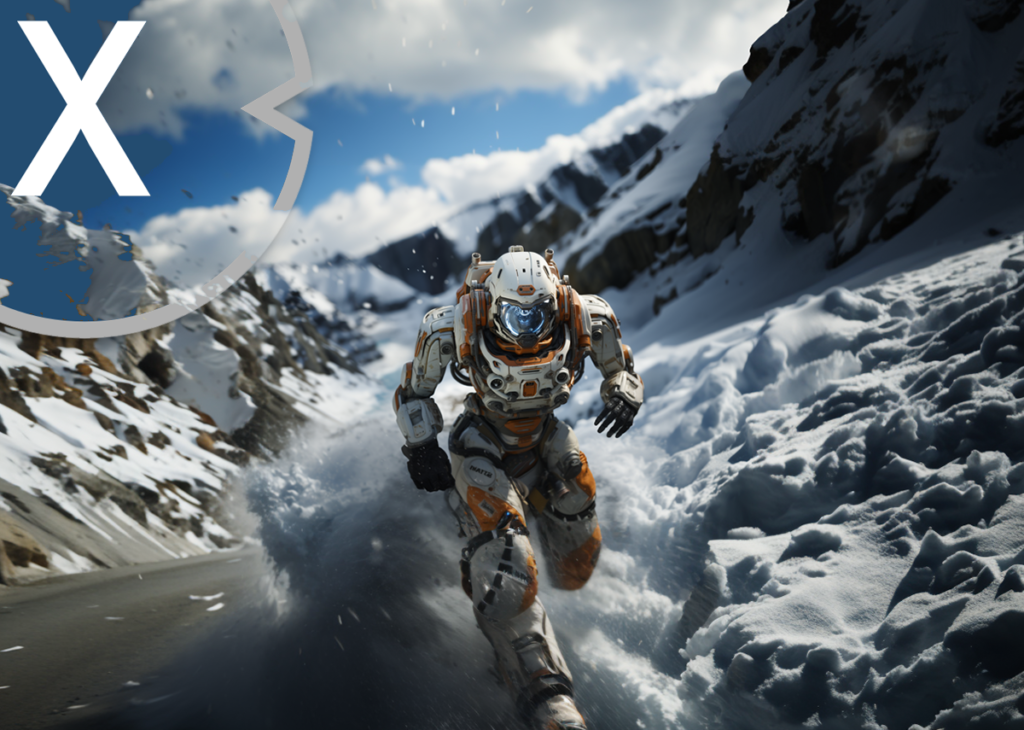
AI & XR 3D Rendering Machine: AI in image production – Visual expectations and aesthetics – Image: Xpert.Digital
🔍 Understanding of target group aesthetics
Using AI in image production is not just a matter of technical skills, but also requires a thorough understanding of the visual expectations of your target audience. Aesthetics play an essential role and AI should be trained to generate images according to industry standards and customer expectations.
🖼️ The importance of product images
Product images are often the first point of contact between customers and products. AI-generated images not only have to be technically first-class, but also have to be able to tell the story of the product and arouse emotions. This includes highlighting the uniqueness of the product and presenting features and benefits in an appealing way.
📏 Quality assurance and benchmarks
It also makes sense to establish internal benchmarks and guidelines for quality assurance. This ensures that all product images convey consistent quality and brand message, regardless of when they were created.
🌐 Trends in AI-powered image editing
In addition, it may be beneficial to keep yourself abreast of new developments and trends in the field of AI-supported image processing. For example, AI approaches based on machine learning can create image compositions that were not previously possible.
⚙️ Increased efficiency in the workflow
Integrating AI into the image production workflow can lead to a significant increase in efficiency after a training phase. Processes that once took days or weeks can often be completed in hours or even minutes.
🔝 Innovative approaches for the digital age
Satisfying the visual appetite of the digital age requires innovative approaches to image production. AI-supported solutions offer a promising opportunity to meet the requirements for speed, adaptability and quality.
📈 Dynamic progress and market positioning
The bottom line is that the use of AI in product image creation is a dynamic and progressive process. Companies that adopt this technology position themselves well for the future and can benefit from a stronger presence in the digital space. It is important never to rest on our laurels, but rather to continually research and expand the possibilities of AI. This is the only way to stay one step ahead of the demands of the market and create images that inspire and sell.
📣 Similar topics
- 🔍 How AI is revolutionizing aesthetics in image production
- 📸 From pixels to emotions: AI in visual product presentation
- 🛠️ Use of AI for consistent product image quality and brand identity
- 🌐 New horizons in image editing through machine learning
- 💼 Increased efficiency in image production through AI application
- 🚀 AI as a driver for fast and flexible image production
- 📈 AI in product image creation: An investment in the digital future
- 🌟 Continuous innovation: The path to optimal AI-supported image production
- 🏆 Image material that inspires: AI use as a competitive advantage
- 🔖 AI-powered image production: exceed expectations and conquer markets
#️⃣ Hashtags: #AI_Imageproduction #VisualIntelligence #Productpresentation #EfficiencyThroughKI #DigitalImageProcessing

Industrial & B2B Business Metaverse: Reduce costs with XR technology for photorealistic product images (XR 3D rendering machine)
XR technology offers a superior solution for creating photorealistic images and allows companies to free themselves from the expensive fees of external media agencies. It is common knowledge that media agencies charge high costs to create such images as it requires expertise, special software and collaboration with various experts.
More about it here:
Plan your solar system for the most common applications conveniently online with our solar system planner!
With our user-friendly solar system planner you can plan your individual solar system online. Whether you need a solar system for your home, your business or for agricultural purposes, our planner offers you the opportunity to take your specific requirements into account and develop a tailor-made solution.
The planning process is simple and intuitive. You simply enter relevant information. Our planner takes this information into account and creates a tailor-made solar system that meets your needs. You can try out different options and configurations to find the optimal solar system for your application.
Additionally, you can save your plan to review later or share with others. Our customer service team is also available to answer your questions and provide support to ensure your solar system is optimally planned.
Use our solar system planner to plan your individual solar system for the most common applications and advance the transition to clean energy. Start now and take an important step towards sustainability and energy independence!

The solar system planner for the most common applications: Plan the solar system online here - Image: Xpert.Digital
More about it here:
We are there for you - advice - planning - implementation - project management
☑️ Smart City & Factory: Industry expert for energetic 5G buildings and halls as well as advice and installation of solar systems
☑️ Xpert.Plus - logistics consulting and logistics optimization
☑️ Industry expert, here with his own Xpert.Digital Industry Hub with over 1,500 specialist articles
I would be happy to serve as your personal advisor.
You can contact me by filling out the contact form below or simply call me on +49 89 89 674 804 (Munich) .
I'm looking forward to our joint project.
Xpert.Digital - Konrad Wolfenstein
Xpert.Digital is a hub for industry with a focus on digitalization, mechanical engineering, logistics/intralogistics and photovoltaics.
With our 360° business development solution, we support well-known companies from new business to after sales.
Market intelligence, smarketing, marketing automation, content development, PR, mail campaigns, personalized social media and lead nurturing are part of our digital tools.
You can find out more at: www.xpert.digital - www.xpert.solar - www.xpert.plus



